Google Hummingbird Algorithmus
In September 2013 Google announced that it had rolled out a brand new algorithm – “Hummingbird” – the month before. The name was chosen with care – the Hummingbird is very fast, and extremely precise.
Searchmetrics has analyzed how the Hummingbird algorithm affected SERPs, and the results are clear: The diversity of search results has decreased at the same time that semantically similar search results seem to be ‘more equal’ than others.
Fast and Accurate + Semantics
In addition to the fast and accurate technical aspects of the Hummingbird change, there has been a major move towards semantic search. Google has immensely improved its understanding of search queries – even long-tail search – and therefore user intention even better. The entire query, and the relations of word groups within search queries, can be increasingly targeted, identified and interpreted.
Google calls it the biggest algorithm advance since 2001, and it has hardly gone unnoticed in the industry, but despite this the immediate change in search results was barely perceptible. Why was this the case? What exactly are the effects and attributes of the Hummingbird algorithm?
Contextual and Conversational Search
The Hummingbird improvements are particularly strong in Contextual and Conversational search, two areas that are strongly linked to fundamental semantics and the relationships between words.
In Contextual search, Google increasingly returns results that match the intention behind the query. Results are no longer limited to the words themselves, but include an interpretation of intent for the search terms.
Contextual Search – An Example:
Search Term: “Richest person“

Google interprets the query and returns an answer in the search results as a Knowledge Graph integration.
As more searches are voice controlled – Conversational search – searches become more long-tailed and often involve whole sentences. The search query is longer and is often made up of a complete set of questions. As mobile devices and voice software proliferate (Smartphones, tablets, Google Glass, SIRI etc.), this type of search query is becoming increasingly common and can also be performed via desktop search (Chrome Apps, etc.).
Conversational Search – An Example:
Search Term: “Who is the richest person in the world”

As can be seen above, Google breaks the question down into its component parts and provides results that are nearly identical to the original keyword search result.
How Hummingbird Affects The Diversity Of Search Results
Based on these observations, Searchmetrics examined how the diversity of search results has developed since the Hummingbird first flew.
Conjecture: The number of distinct URLs in SERPs should be declining as increasingly similar keyword queries with the same “more equal” search intent results are displayed. Here are the results of the investigation based on thousands of keyword searches. The y-axis refers to the number of different search results, the X axis shows time in calendar weeks:
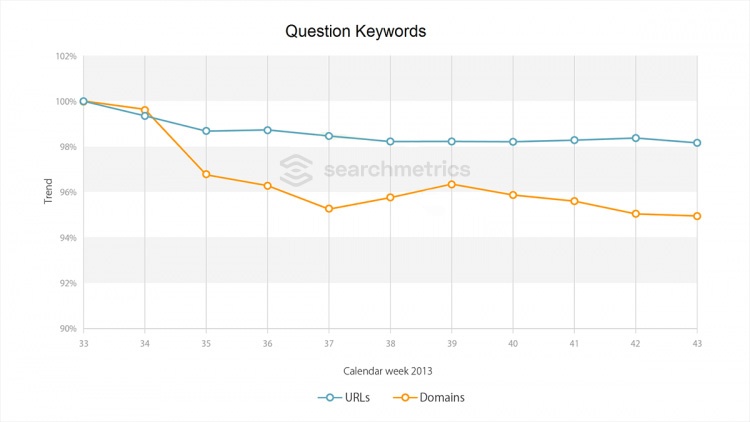
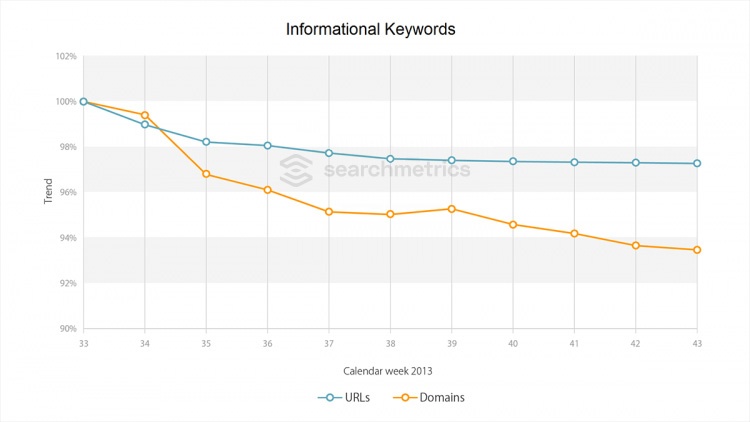

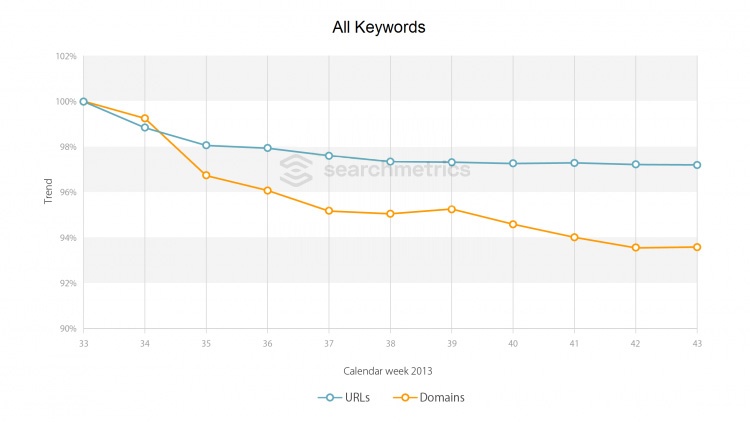
It can be clearly seen that the diversity of search results has decreased by a total of about 6% since the introduction of Hummingbird. This affects navigational keywords less (by almost 4%) than informational keywords, as well as interrogative keywords (also by about 6%).
Explanation: Informational keyword search returns the largest fluctuation of URLs in the search results. Since Google now recognizes query similarities, the subsequent search results appear adjusted.
Diversity of SERPs Based On Specific Keyword Pairs
Searchmetrics measured the consistency of search results for keyword pairs from a representative keyword set. The analysis examined a number of queries that were semantically highly identical (for example: “bang hairstyles” v’s “hairstyles with bangs”). The analysis was performed at three data points – just before Hummingbird (07/2013), shortly after Hummingbird (10/2013) and in January 2014.
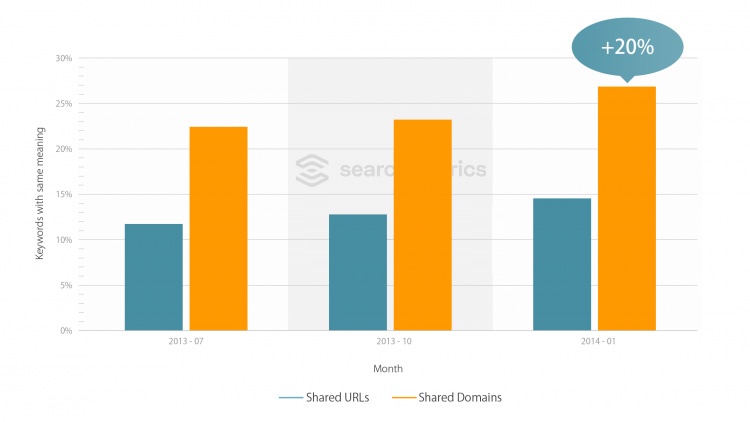
Result: As can be seen from the graph, search result matches for semantically similar keyword pairs has increased by nearly 20%. This is best illustrated by an example. Here, Searchmetrics had the pre-Hummingbird rankings reconstructed from its own database and compared with current rankings.
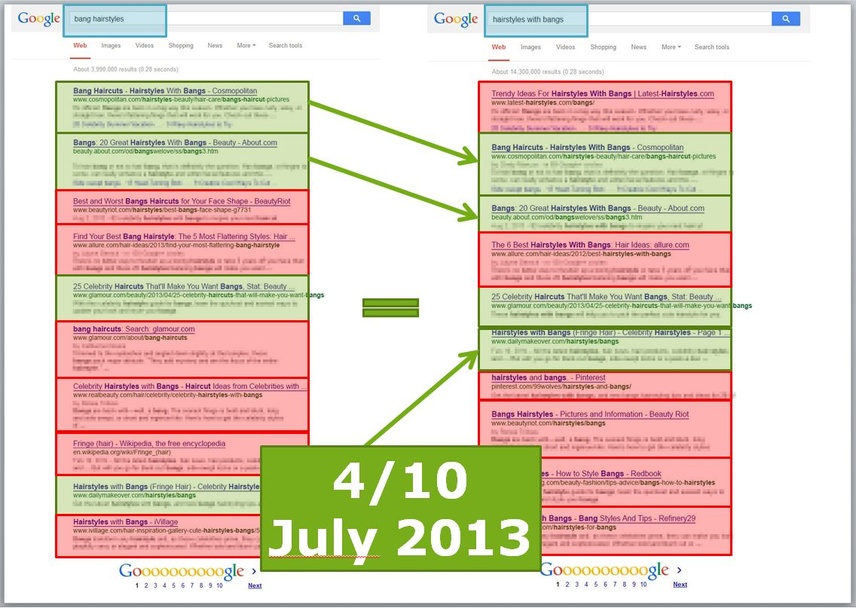
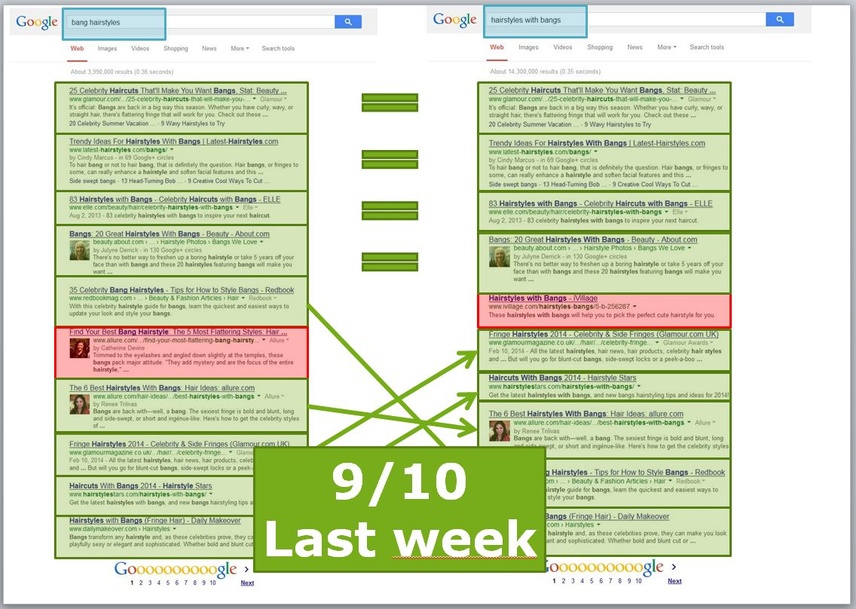
Before Hummingbird, 4/10 URL results were identical; after Hummingbird that figure rises to 90% on SERPs.
Please Note: There results do not refer to exact rankings, but to the presence on page 1 of the SERP.
The Evolution Of The Knowledge Graph
There has been continuous evolution not only of the search results themselves, but also of Google’s response box, the Knowledge Graph. More and more relevant information now appears next to or above the search results in addition to the core search criteria.
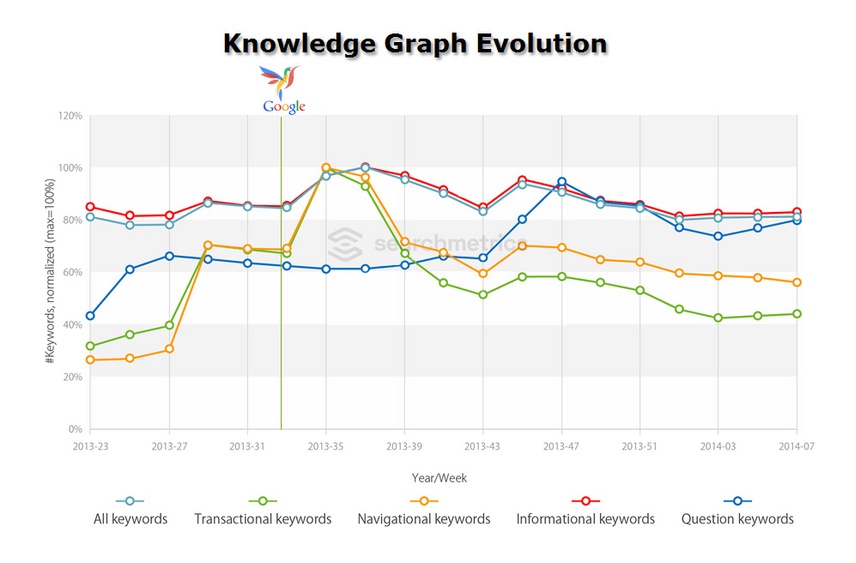
The graph shows the evolution of Knowledge Graph integrations in each keyword category – normalized to a maximum value of 100%. It is clear that, immediately after the Hummingbird release, all SERPs keywords categories returned more Knowledge Graph overlays than before (i.e more keywords had KG integration), with the exception of keyword searches as questions. As Hummingbird proliferated, however, the number of KG integrations increased in all categories, including keyword searches as questions that also increased.
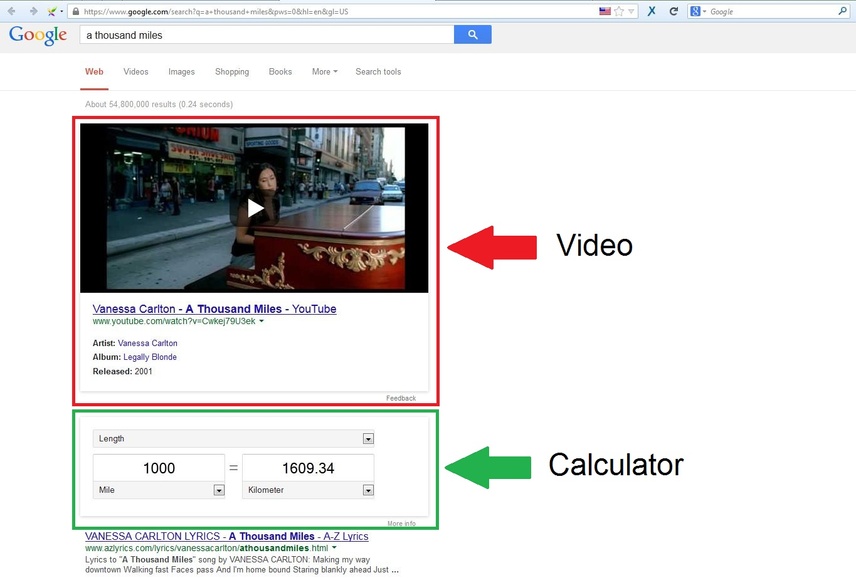
The type of Knowledge Graph has also increased, and there are numerous versions (weather, recipes, menus, Olympic medal lists, video, calculator, etc.) Sometimes, however, even Google has problems deciphering the exact intention behind a search query, and this can lead to unrelated Knowledge Graphs appearing alongside each other.
Hummingbird: Goal-Oriented, More Accurate
To summarize, Hummingbird has resulted in an overall decrease of diversity in search results, and this is particularly true for keywords with similar semantics. Knowledge Graph integrations may not be common, but they are becoming increasingly specific.
In short, Google is getting better at understanding the search intent of the user and producing matched search results – quickly and accurately.


